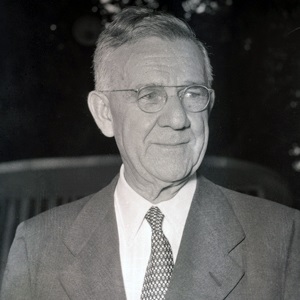Why was George Hoyt Whipple Awarded the Nobel Prize for Physiology or Medicine in 1934?
George Hoyt Whipple: Nobel Laureate for Pioneering Work on Anemia (19
George Hoyt Whipple, an American physician and pathologist, made significant contributions to the field of medicine during the early 20th century. Renowned for his groundbreaking research on the causes and treatment of anemia, Whipple played a pivotal role in advancing our understanding of this condition. In recognition of his exceptional work, he was awarded the Nobel Prize for Physiology or Medicine in 1934. This article explores the reasons behind Whipple’s prestigious honor and highlights his remarkable scientific breakthroughs.

Pioneering Research on Anemia:
George Hoyt Whipple’s Nobel Prize was primarily awarded for his investigations into the pathogenesis and treatment of anemia, a condition characterized by a deficiency of red blood cells or hemoglobin. Whipple conducted extensive studies on the underlying causes of anemia and made several key discoveries.
One of Whipple’s significant contributions was his identification of the relationship between diet and anemia. He conducted experiments that demonstrated how dietary modifications, particularly the inclusion of liver, could effectively treat certain forms of anemia. His work revealed the crucial role of specific nutrients, such as iron and folic acid, in maintaining healthy blood cell production.
Discovery of the Role of the Liver:
Whipple’s research also led to the discovery of the liver’s role in red blood cell production. He observed that the consumption of liver extracts, rich in iron and other essential nutrients, significantly improved the symptoms of anemia in animals. This breakthrough finding highlighted the liver’s ability to store and supply vital substances necessary for red blood cell synthesis.
Implications for Treatment and Medicine:
George Hoyt Whipple’s discoveries had a profound impact on the field of medicine, particularly in the understanding and treatment of anemia. His research laid the foundation for dietary interventions and the use of liver extracts as therapeutic approaches for managing various types of anemia.
Whipple’s work led to the development of liver therapy as an effective treatment for certain forms of anemia. It also paved the way for further investigations into the role of specific nutrients in red blood cell production and the development of nutritional therapies for other related conditions.
Recognition and Legacy:
George Hoyt Whipple’s Nobel Prize in 1934 celebrated his exceptional scientific achievements and the transformative impact of his research in the field of anemia. His discoveries regarding the relationship between diet, liver function, and red blood cell production revolutionized our understanding of the causes and treatment of anemia.
Whipple’s contributions continue to shape the field of hematology, guiding our understanding of the pathogenesis of anemia and influencing therapeutic approaches. His research provided valuable insights into the role of nutrition in maintaining healthy blood cell production and inspired further investigations into the treatment of hematological disorders.
George Hoyt Whipple’s Nobel Prize in 1934 honored his groundbreaking contributions to the field of medicine, particularly in the understanding and treatment of anemia. His research on the relationship between diet, liver function, and red blood cell production provided crucial insights into the causes of anemia and opened up new avenues for therapeutic interventions.
Whipple’s legacy continues to inspire advancements in the field of hematology, influencing our understanding of blood disorders and nutritional therapies. His work serves as a testament to the power of scientific inquiry and the pursuit of knowledge in improving human health and advancing medical science.




